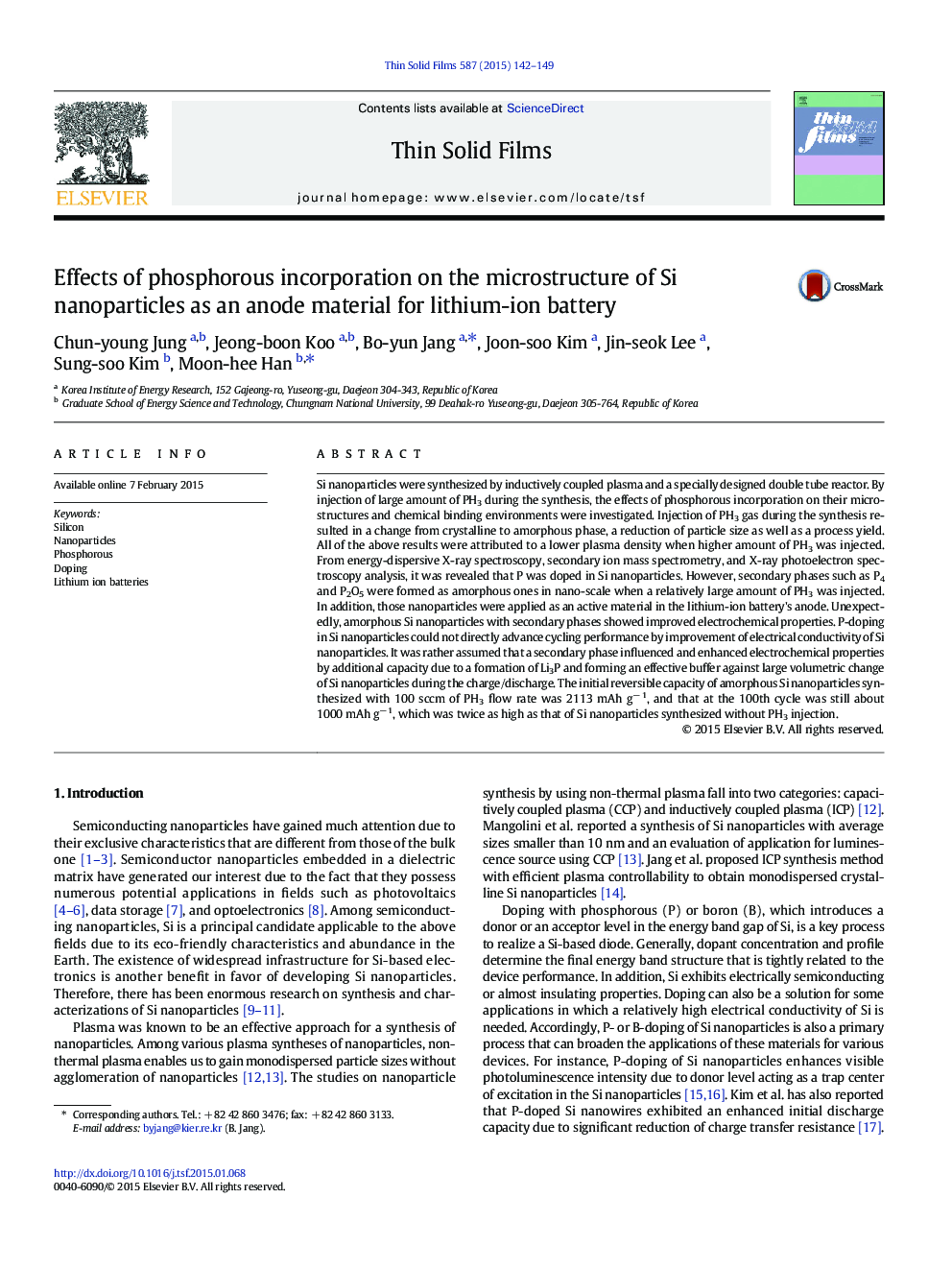| کد مقاله | کد نشریه | سال انتشار | مقاله انگلیسی | نسخه تمام متن |
|---|---|---|---|---|
| 1664726 | 1518018 | 2015 | 8 صفحه PDF | دانلود رایگان |

• Silicon nanoparticles with phosphorous were synthesized by inductively coupled plasma.
• Effects of phosphorous incorporation on the microstructure were studied.
• Silicon nanoparticles were applied as an anode material for lithium-ion battery.
• Improved electrochemical properties were achieved by phosphorous incorporation.
Si nanoparticles were synthesized by inductively coupled plasma and a specially designed double tube reactor. By injection of large amount of PH3 during the synthesis, the effects of phosphorous incorporation on their microstructures and chemical binding environments were investigated. Injection of PH3 gas during the synthesis resulted in a change from crystalline to amorphous phase, a reduction of particle size as well as a process yield. All of the above results were attributed to a lower plasma density when higher amount of PH3 was injected. From energy-dispersive X-ray spectroscopy, secondary ion mass spectrometry, and X-ray photoelectron spectroscopy analysis, it was revealed that P was doped in Si nanoparticles. However, secondary phases such as P4 and P2O5 were formed as amorphous ones in nano-scale when a relatively large amount of PH3 was injected. In addition, those nanoparticles were applied as an active material in the lithium-ion battery's anode. Unexpectedly, amorphous Si nanoparticles with secondary phases showed improved electrochemical properties. P-doping in Si nanoparticles could not directly advance cycling performance by improvement of electrical conductivity of Si nanoparticles. It was rather assumed that a secondary phase influenced and enhanced electrochemical properties by additional capacity due to a formation of Li3P and forming an effective buffer against large volumetric change of Si nanoparticles during the charge/discharge. The initial reversible capacity of amorphous Si nanoparticles synthesized with 100 sccm of PH3 flow rate was 2113 mAh g− 1, and that at the 100th cycle was still about 1000 mAh g− 1, which was twice as high as that of Si nanoparticles synthesized without PH3 injection.
Journal: Thin Solid Films - Volume 587, 31 July 2015, Pages 142–149